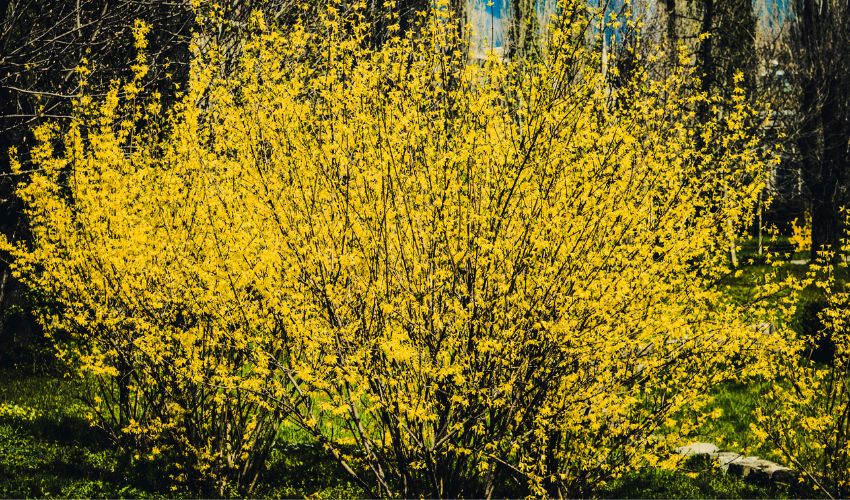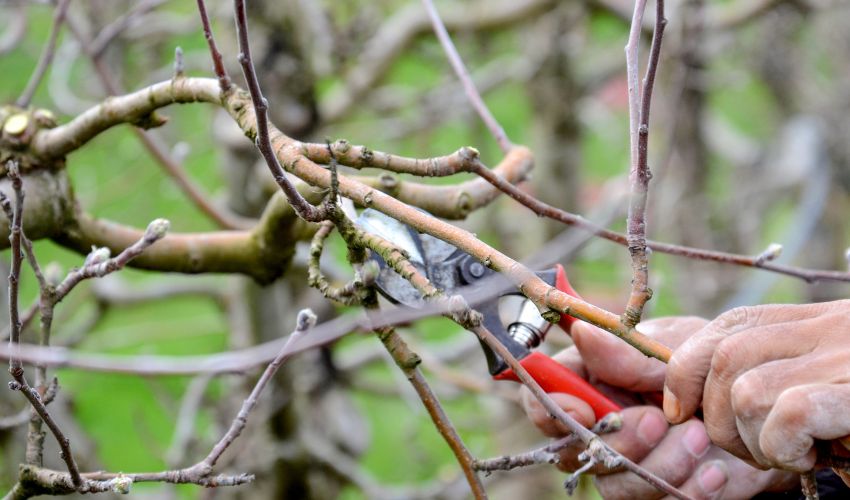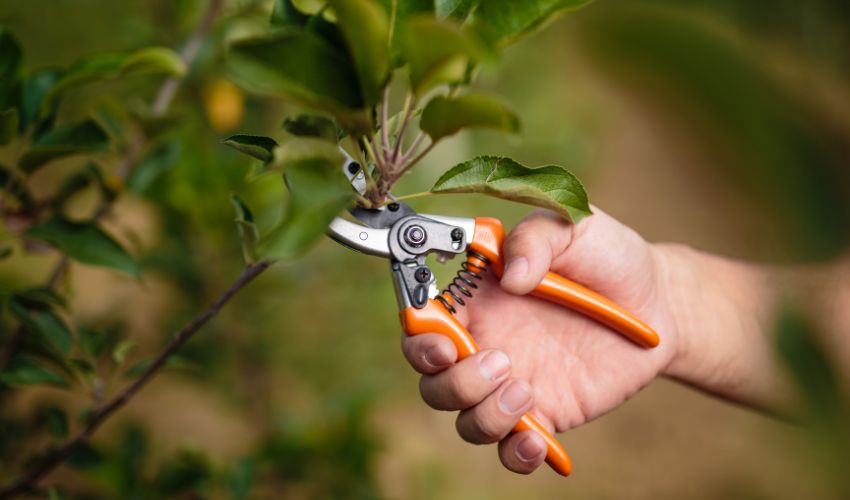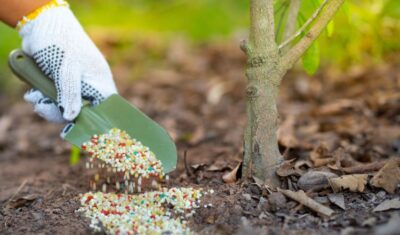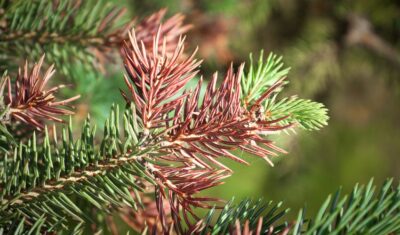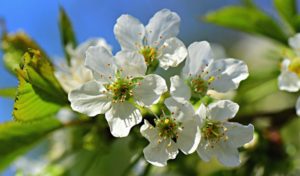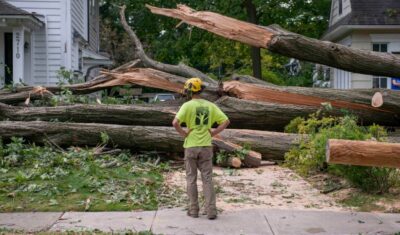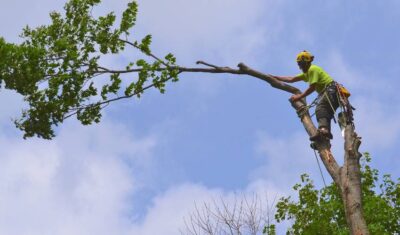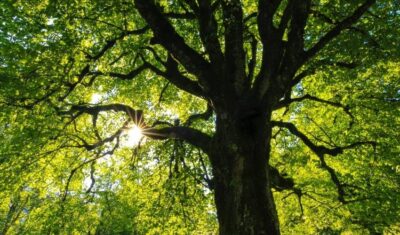Have you ever looked at your yard and wondered why your shrubs don’t look as vibrant as those in your favorite gardening magazine? Or maybe you’ve noticed your neighbor’s yard and felt a twinge of green envy? The secret to a stunning landscape often lies in the art of shrub pruning, a task that homeowners in Northeast Ohio can master with a bit of guidance. At Independent Tree, we’re here to share our expertise and help you transform your yard into a horticultural masterpiece. Keep reading to learn all about shrub pruning in Northeast Ohio.
Key Takeaways: Essential Points from Our Shrub Pruning Guide
- Timing Matters: Prune spring-blooming shrubs right after they bloom, and prune summer-blooming and evergreen shrubs in late winter or early spring.
- Pruning Techniques Matter: Understand different pruning techniques like thinning, shaping, and rejuvenating, and use them as needed for the specific type of shrub.
- Aftercare is Key: Post-pruning care, including proper watering, fertilizing, and mulching, is essential for the health and growth of your shrubs.
- Seek Professional Help When Needed: For complex pruning jobs or health concerns, don’t hesitate to contact certified arborists like those at Independent Tree for expert assistance.
Why Prune Your Shrubs?
Pruning isn’t just about maintaining the shape and size of your shrubs; it plays an important role in their overall health and vitality, especially in the diverse landscapes of the Chagrin Valley. Here are a few reasons why regular pruning is necessary for every conscientious homeowner.
Health Benefits of Shrub Pruning
- Disease Prevention and Management – Pruning helps remove diseased, damaged, or dead branches, preventing the spread of disease and pests like the boxwood leafminer.
- Air Circulation and Sunlight Penetration – Proper pruning techniques improve air circulation and sunlight exposure, reducing the risk of fungal infections and promoting healthier shrub growth.
- Encourage Fruit and Flower Production – For flowering and fruit-bearing shrubs, pruning can stimulate the development of new flowering spurs, enhancing the shrub’s bloom and fruit yield.
Increase Aesthetic and Functional Appeal
- Improve Shape and Structure – A well-pruned shrub maintains an attractive shape, contributing to the overall aesthetics of your landscape.
- Control Shrub Size – Regular pruning helps control the shrub’s size, ensuring it complements rather than overwhelms your garden space.
- Accentuate Features – Strategic pruning can highlight the unique features of a shrub, such as its colorful stems or distinctive foliage.
Improve Safety
- Preventing Property Damage: Overgrown branches can pose a risk to your home, especially during Ohio’s harsh weather conditions. Pruning helps mitigate this risk.
- Maintaining Clear Pathways: Proper pruning ensures that walkways and views from windows are not obstructed by overgrown shrubbery.
Promote Plant Health and Longevity
- Revitalizing Older Shrubs: Pruning can rejuvenate older, overgrown shrubs, encouraging new growth and extending their lifespan.
- Reducing Competition: By removing less vigorous or competing branches, pruning allows the stronger parts of the shrub to flourish.
Pruning your shrubs is about understanding the needs of each plant and how they fit into the larger picture of your Chagrin Valley landscape. Whether it’s enhancing the beauty of your landscape, promoting your plants’ health, or ensuring your property’s safety, pruning plays a pivotal role. Embrace the practice, and watch your garden transform into a vibrant, flourishing, and safe space for you and your family to enjoy.
Understanding Growth Habits: Tailoring Pruning to Your Shrubs’ Needs
Different shrubs have varying growth habits, and recognizing these is key to effective pruning in the Chagrin Valley. Understanding these habits ensures that your pruning efforts are beneficial and appropriate for each type of shrub in your garden.
Here’s what you need to know to properly prune different types of shrubs –
Upright Growers (e.g., Forsythia, Lilac)
These shrubs grow vertically and may become leggy if not pruned correctly.
Focus on thinning out older stems to encourage new growth from the base and trim the tops to maintain a manageable height and shape.
Mounding Shrubs (e.g., Spirea, Potentilla)
These have a rounded, dense growth habit, often growing as wide as they are tall.
Lightly trim the outer edges to maintain shape. Periodic thinning of the interior branches promotes air circulation and new growth.
Spreading Shrubs (e.g., Juniper, Cotoneaster)
These grow horizontally and are often used as ground covers.
Trim the edges to contain spread and remove any upward-growing branches that disrupt the shrub’s natural form.
Vining and Climbing Shrubs (e.g., Climbing Hydrangea, Certain Roses)
These shrubs grow vertically and often need support structures.
Regularly prune to maintain shape and encourage flowering on new wood. Remove any dead or overcrowded stems.
Pro Tip from Independent Tree: Always check the specific needs of each shrub species before pruning. This ensures optimal health and bloom for your beloved plants!
Every shrub in your Chagrin Valley garden has its unique growth habit, which dictates how and when it should be pruned. By understanding these habits, you can tailor your pruning techniques to suit each plant, enhancing your garden’s overall health and aesthetic. Take the time to observe and learn about the growth patterns of your shrubs before picking up those pruning shears.
Timing is Everything: When to Prune Shrubs in Northeast Ohio
Understanding the right time to prune your shrubs is critical for maintaining their health and beauty, especially in the diverse climate of Northeast Ohio. Here’s a detailed breakdown of when to prune specific types of shrubs:
Spring-Blooming Shrubs (e.g., Forsythia, Lilac)
The best time to prune is immediately after they finish blooming in late spring. These shrubs set their flower buds the year before. Pruning after blooming ensures you don’t cut off next year’s blooms.
Summer-Blooming and Evergreen Shrubs (e.g., Rose of Sharon, Hydrangea)
The best time to prune is late winter or early spring before new growth begins. Pruning at this time invigorates these shrubs, encouraging robust growth and flowering in the summer.
Deciduous Shrubs (e.g., Dogwood, Spirea)
The best time to prune is late winter or early spring. Pruning when these shrubs are dormant stimulates strong, healthy new growth.
Flowering Shrubs (e.g., Rhododendron, Azalea):
Known for their seasonal blooms, these shrubs often require specific pruning times not to disrupt their flowering cycle. Prune immediately after flowering to avoid cutting off next season’s buds. Remove dead or diseased wood and thin to shape.
Evergreen Shrubs (e.g., Boxwood, Holly):
These maintain foliage year-round and can range in size and shape. Light pruning for shape can be done any time of year, but major pruning should be done in late winter or early spring.
Routine maintenance pruning can be done throughout the growing season as needed. Removing dead or diseased wood and minor shaping doesn’t significantly impact the shrub, so feel free to cut off deadwood or lightly trim back the odd overgrown branch to keep your shrubs looking their best.
The fluctuating temperatures and lake-effect snow in Northeast Ohio mean timing can vary slightly from year to year. Always consider current and forecasted weather patterns, as events like late freezes or early thaws can affect the best pruning times.
Pruning at inappropriate times can affect the shrub’s blooming cycle, particularly in the variable Northeast Ohio climate.
If you’re unsure about the best time to prune your specific shrubs, don’t hesitate to contact the experts at Independent Tree for tailored advice and professional services.
Seasonal Reminder from Independent Tree: Mark your calendar with pruning dates for your specific shrubs. This simple step can make a big difference in your landscape’s health and beauty!
Shrub Pruning Techniques
When it comes to pruning your shrubs or bushes, technique is just as important as it is for pruning large trees. However, the pruning methods and strategies used may differ a little. Common techniques used for shrubs include thinning, shaping, and rejuvenation pruning.
Thinning
Thinning is a central technique in shrub care, particularly for dense, overgrown shrubs in Northeast Ohio. This method involves selectively removing interior branches from the shrub to improve its overall health and appearance. Keep these tips in mind when thinning shrubs:
- Remove only carefully selected branches: To enhance air circulation and sunlight penetration, identify and remove crowded interior branches. Never remove more than one-third of the shrub as it can cause severe stress.
- Thinning promotes growth: By removing older branches, thinning encourages new, vigorous growth development.
- Be sure to preserve the shrub’s integrity: Thinning should be done judiciously to maintain the shrub’s natural form. Overthinning, or thinning one part of the shrub more than another, will result in an unappealing appearance.
Shaping
Shaping is both an aesthetic and health-promoting practice. It includes:
- Contouring for aesthetic appeal: Shaping involves trimming the outer branches to define the shrub’s shape, aligning with your property’s landscape design.
- Regular maintenance: Shaping isn’t something you do once an forget it. Periodic shaping is needed to help control the shrub’s size and prevents overgrowth.
Rejuvenation Pruning for Overgrown Shrubs
Rejuvenation pruning, while it may appear to be a drastic way of cutting back a shrub, is essential for revitalizing older, overgrown shrubs. In Northeast Ohio, late winter is the ideal time for rejuvenation pruning as the shrub is dormant, reducing stress.
- Cut stems back hard: Cut the shrub down to just a few inches above the ground.
- New growth emerges in spring: Rejuvenation pruning leads to the growth of new shoots in spring and a denser, more vibrant shrub.
Nurturing Your Shrubs After Pruning
Once you’ve finished pruning your shrubs, the care you provide in the following weeks will affect their recovery and continued health. Here are the key steps for optimum post-pruning care:
Watering Needs
- Immediately after pruning: Water your shrubs thoroughly right after pruning. This helps them recover from the stress of pruning and encourages new growth.
- Ongoing care: Maintain a consistent watering schedule, especially during dry spells. The amount of water needed depends on the species and the climate in Northern Ohio.
Fertilizing for Health
Fertilize about two weeks after pruning to help support the emerging new growth. Use a balanced, slow-release fertilizer suitable for your specific shrub type. Organic options are preferable for environmental health. Always follow the instructions on the fertilizer package for the best results.
Mulching for Protection
Mulch helps retain soil moisture, regulate temperature, and reduce weed competition. Spread a 2-3 inch layer of organic mulch around the base of the shrub, avoiding direct contact with the stems.
Monitoring for Pests and Diseases
Inspect your shrubs regularly for signs of pests or diseases, which can be more prevalent on freshly pruned plants. When necessary, use organic pest control methods to combat infestations and disease outbreaks.
Supporting New Growth
If the pruning was extensive, providing temporary support with stakes can help the shrub maintain its shape and stability as it grows.
We also advise lightly pruning new growth as it emerges to encourage branching and denser foliage.
Post-pruning care is as essential as the pruning itself. Proper watering, fertilizing, and monitoring ensure your shrubs remain healthy and vibrant. Remember, the team at Independent Tree is always here to offer advice and assistance. With the right care, your shrubs will thrive and continue to enhance the beauty of your Northeast Ohio landscape for years to come.
Gardening Tip from Independent Tree: Keeping a garden journal with notes on your pruning and aftercare activities can be incredibly helpful for maintaining the health of your shrubs year after year!
Pruning for Perfection: Call Independent Tree
Pruning your shrubs is more than just a chore; it’s an investment in the beauty and health of your landscape. With these tips and techniques, you’re well on your way to becoming a pruning pro. But remember, if you ever feel overwhelmed or unsure, Independent Tree’s team of certified arborists in Northeast Ohio is just a call away. We’re not just experts; we’re your neighbors, committed to keeping our local landscapes lush and beautiful.
Ready to Prune Like a Pro?
Contact Independent Tree at 440-564-1374 for expert advice or assistance with your shrub pruning needs. As we like to say, a well-pruned shrub is a happy shrub!
Do you need help pruning your shrubs?
It can be difficult to prune larger shrubs if you lack experience and knowledge, so it's important that you seek the advice of an expert in order to get the best from your plant without compromising its health or beauty. Contact Independent Tree for your pruning needs at 440-564-1374.Recent Articles
Topics
About The Author

STAY IN THE LOOP
WITH OUR
LATEST UPDATES
"*" indicates required fields

